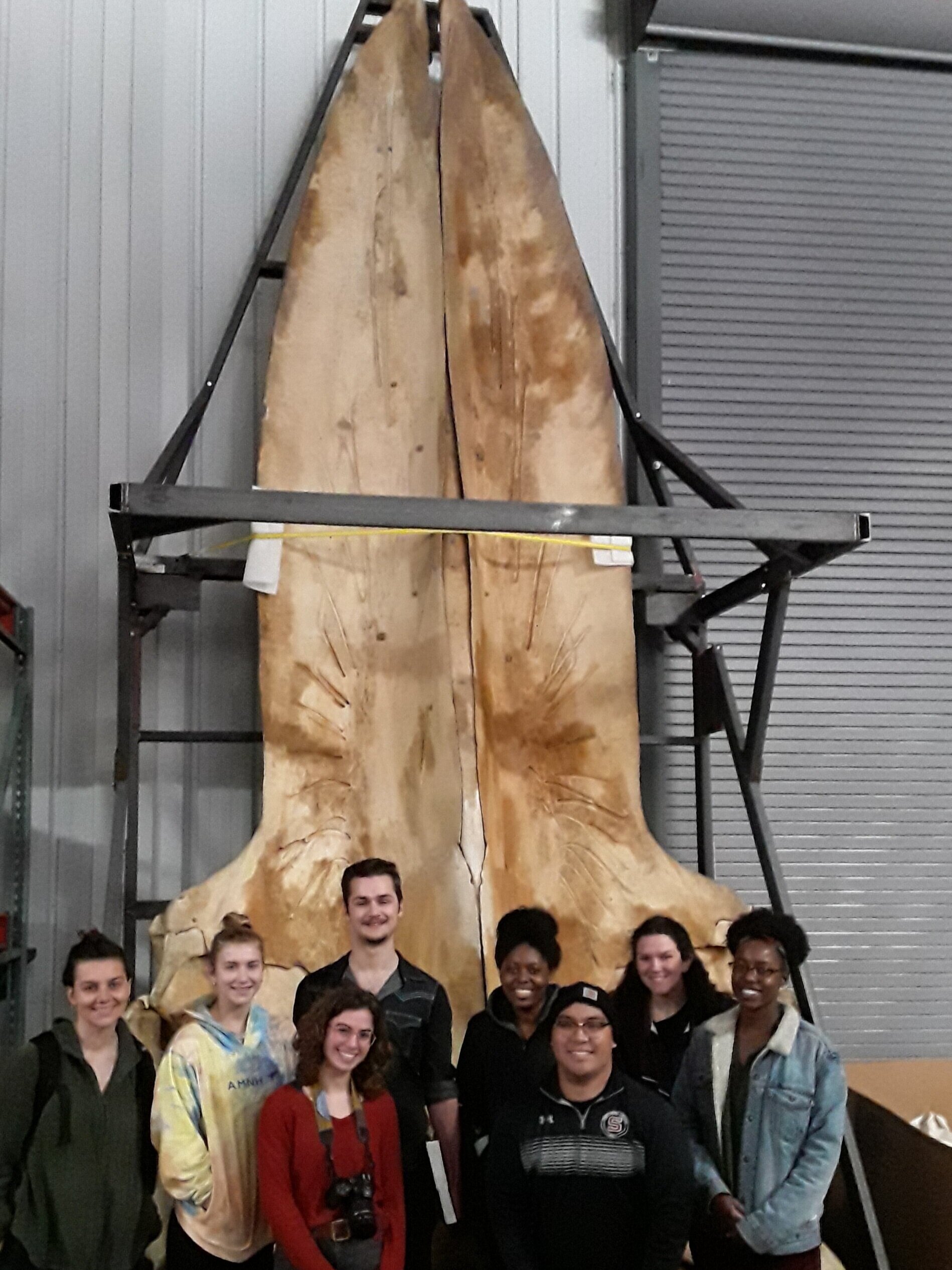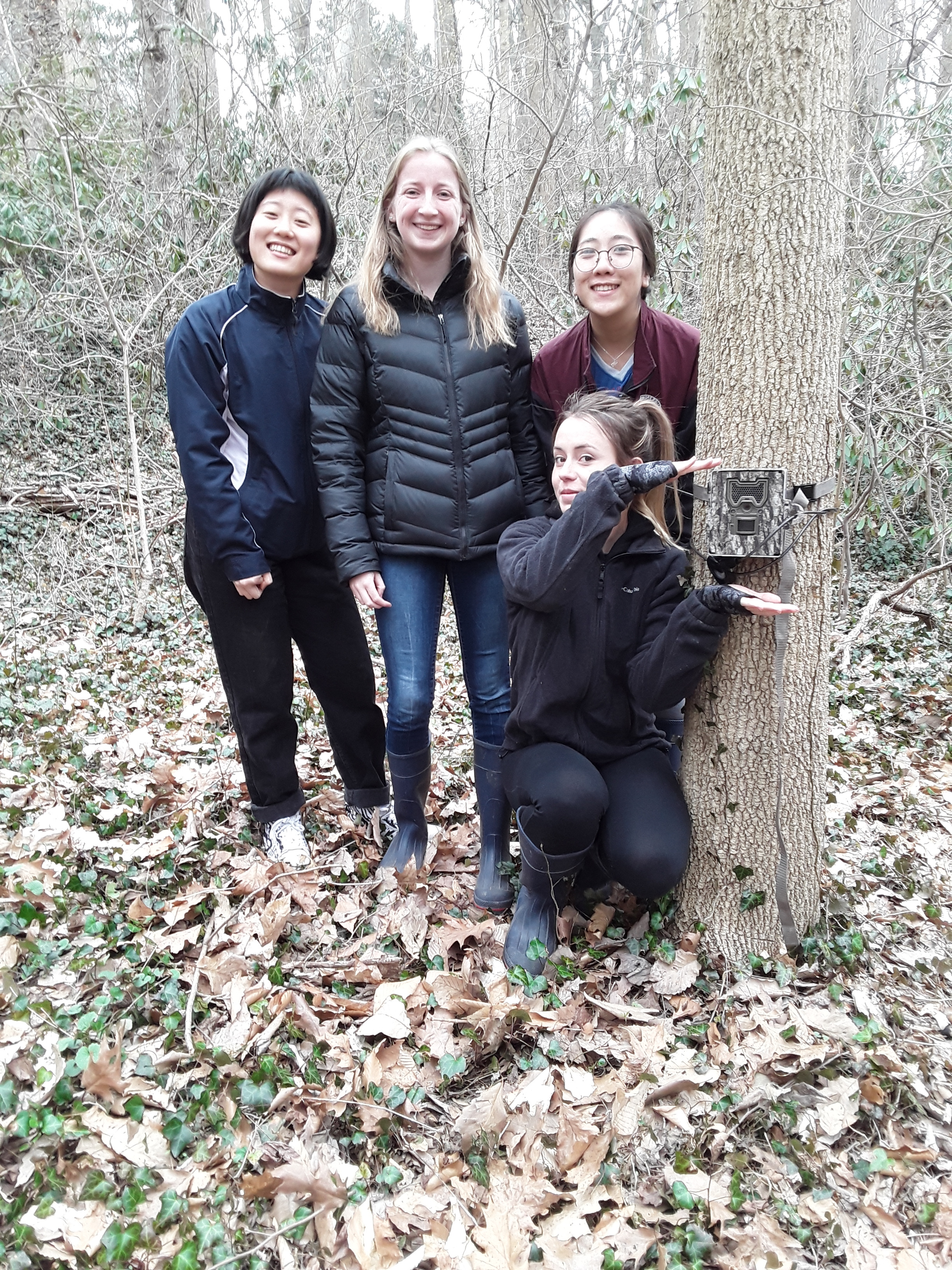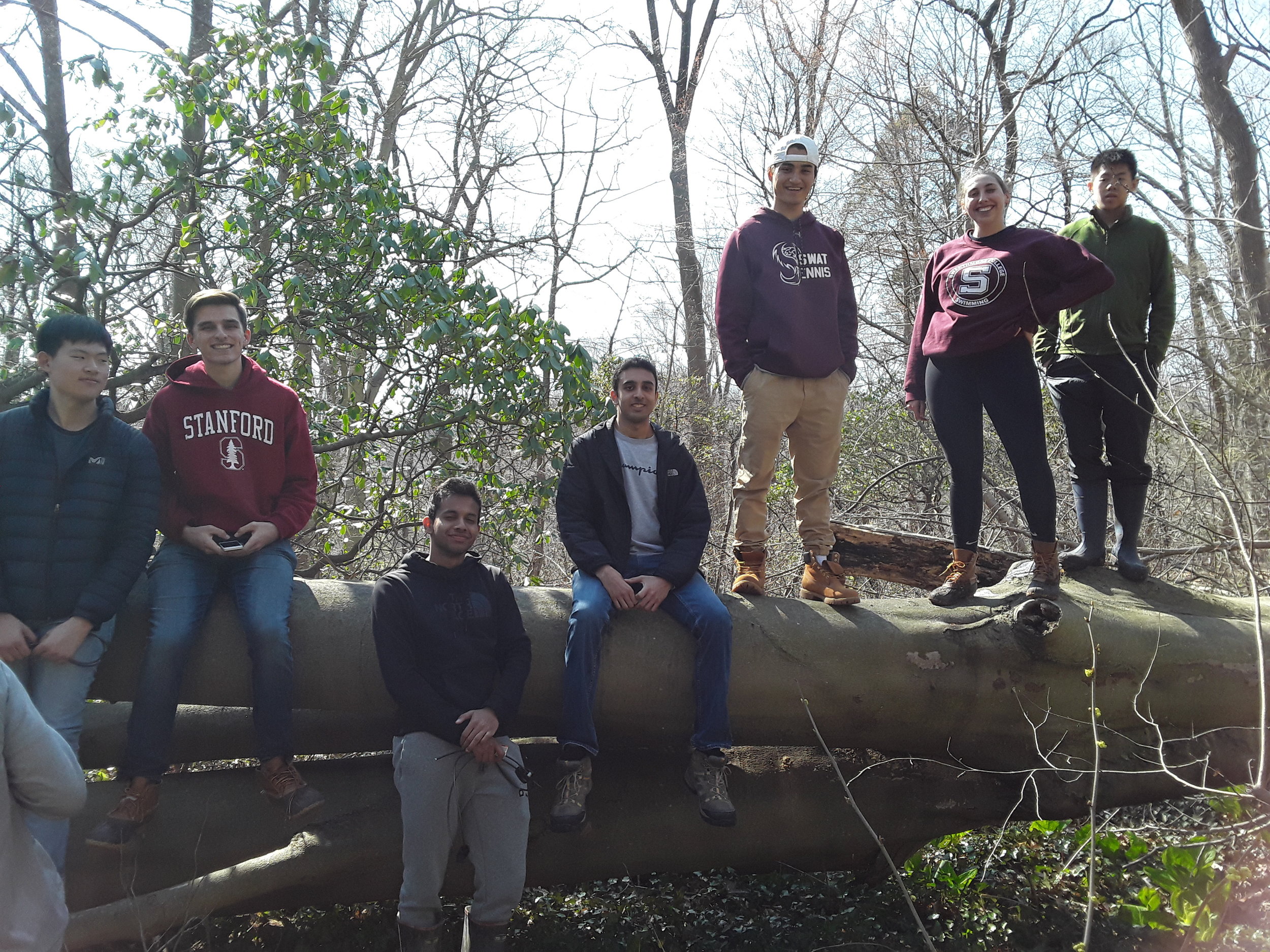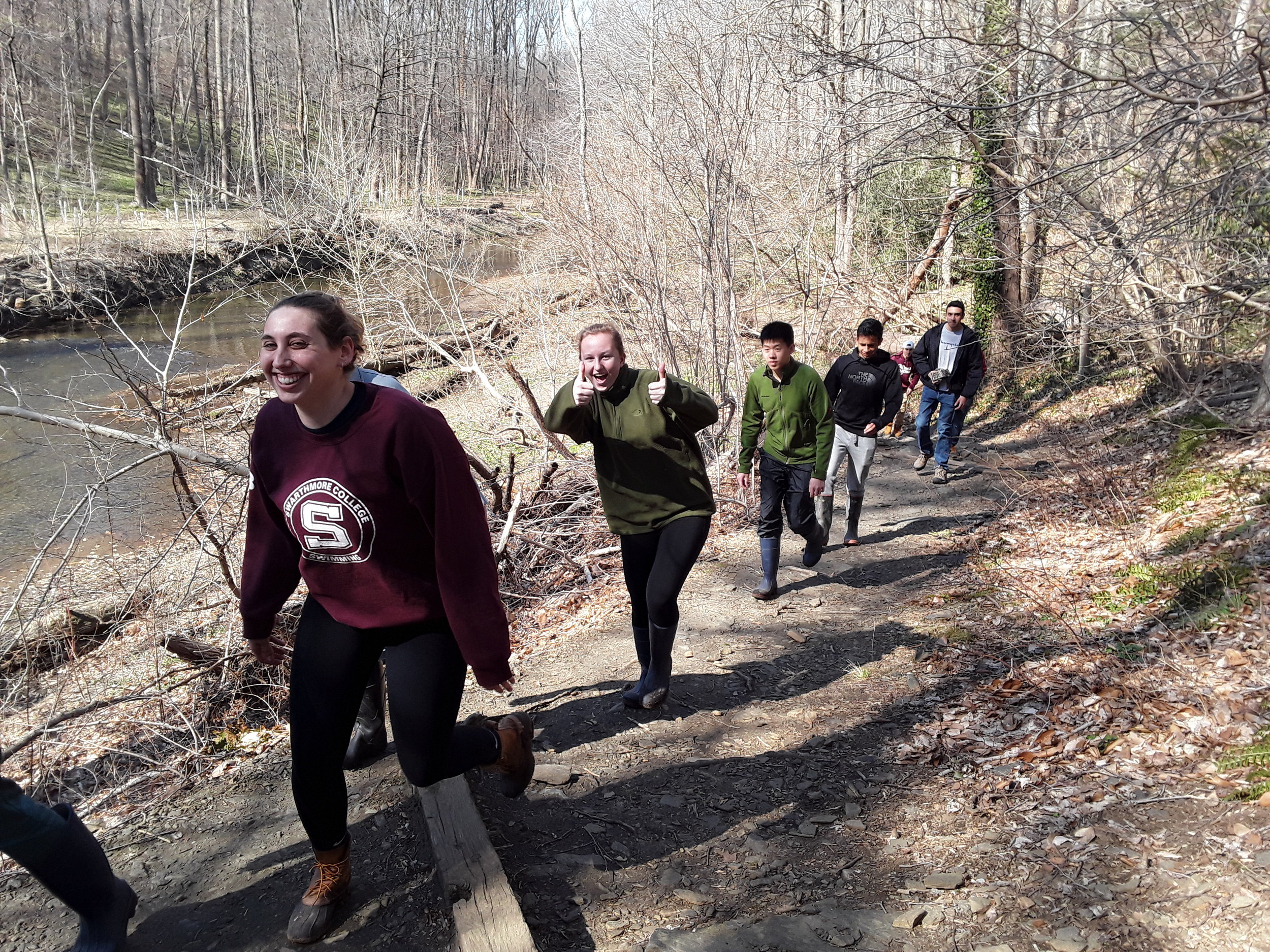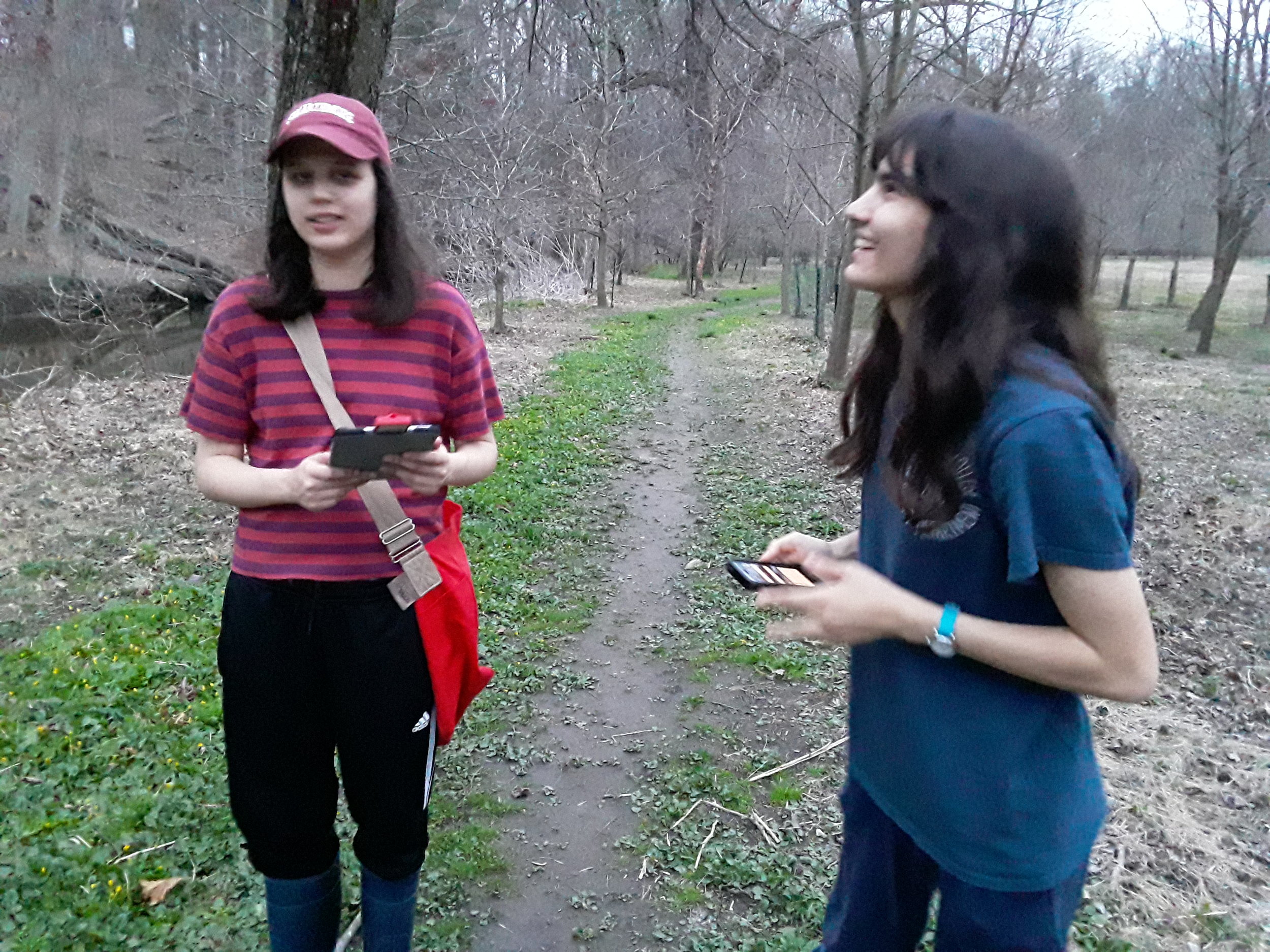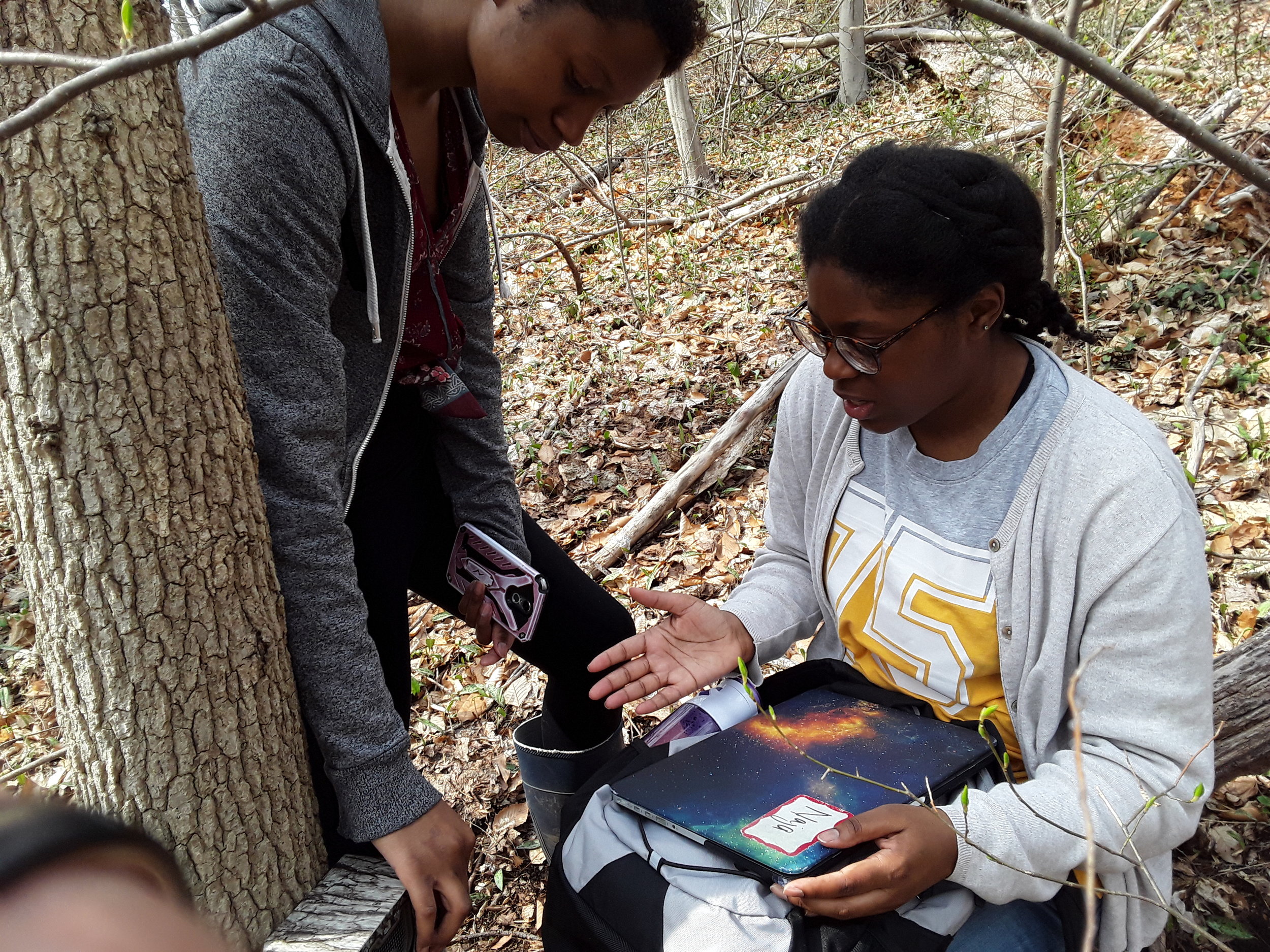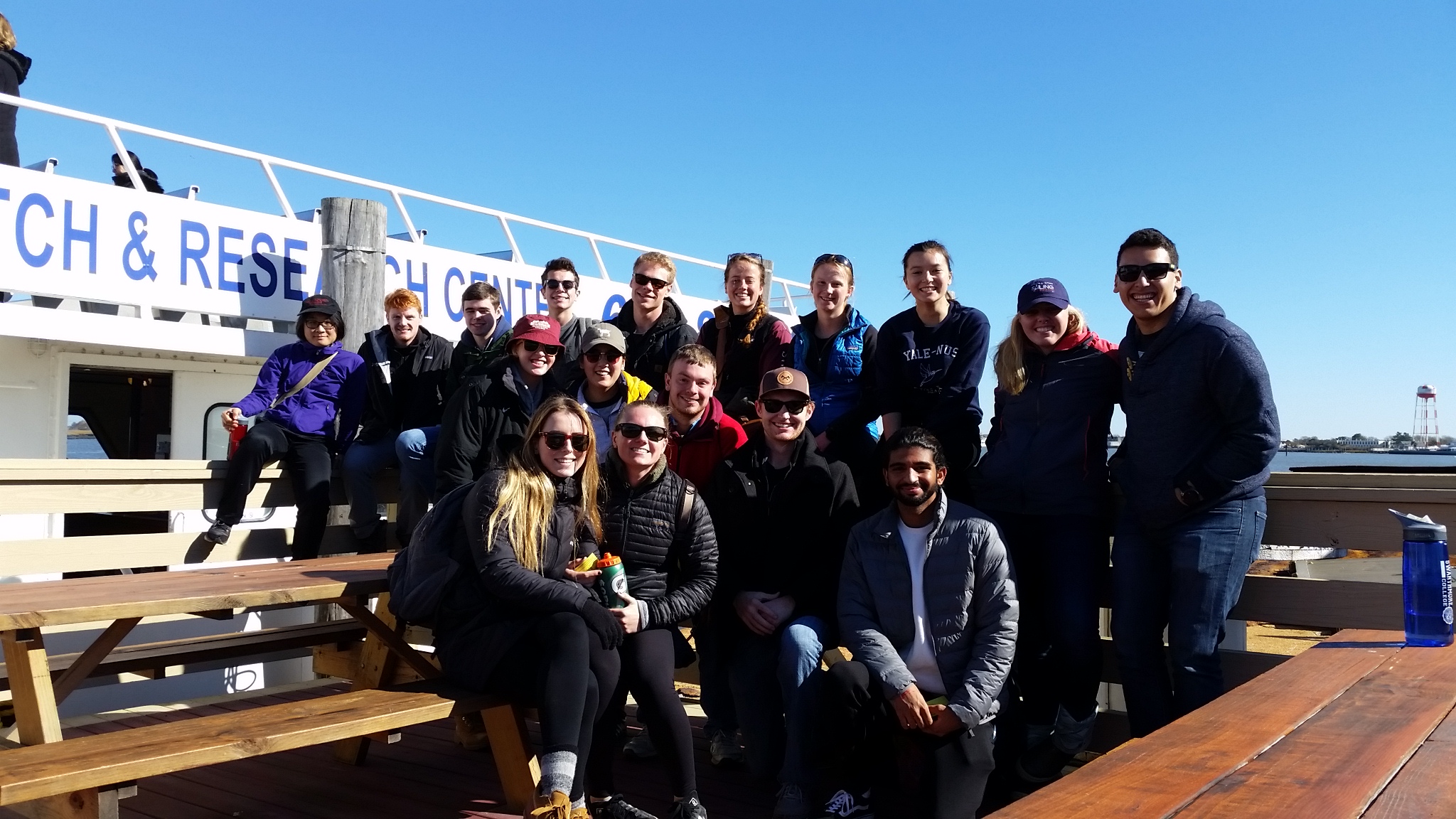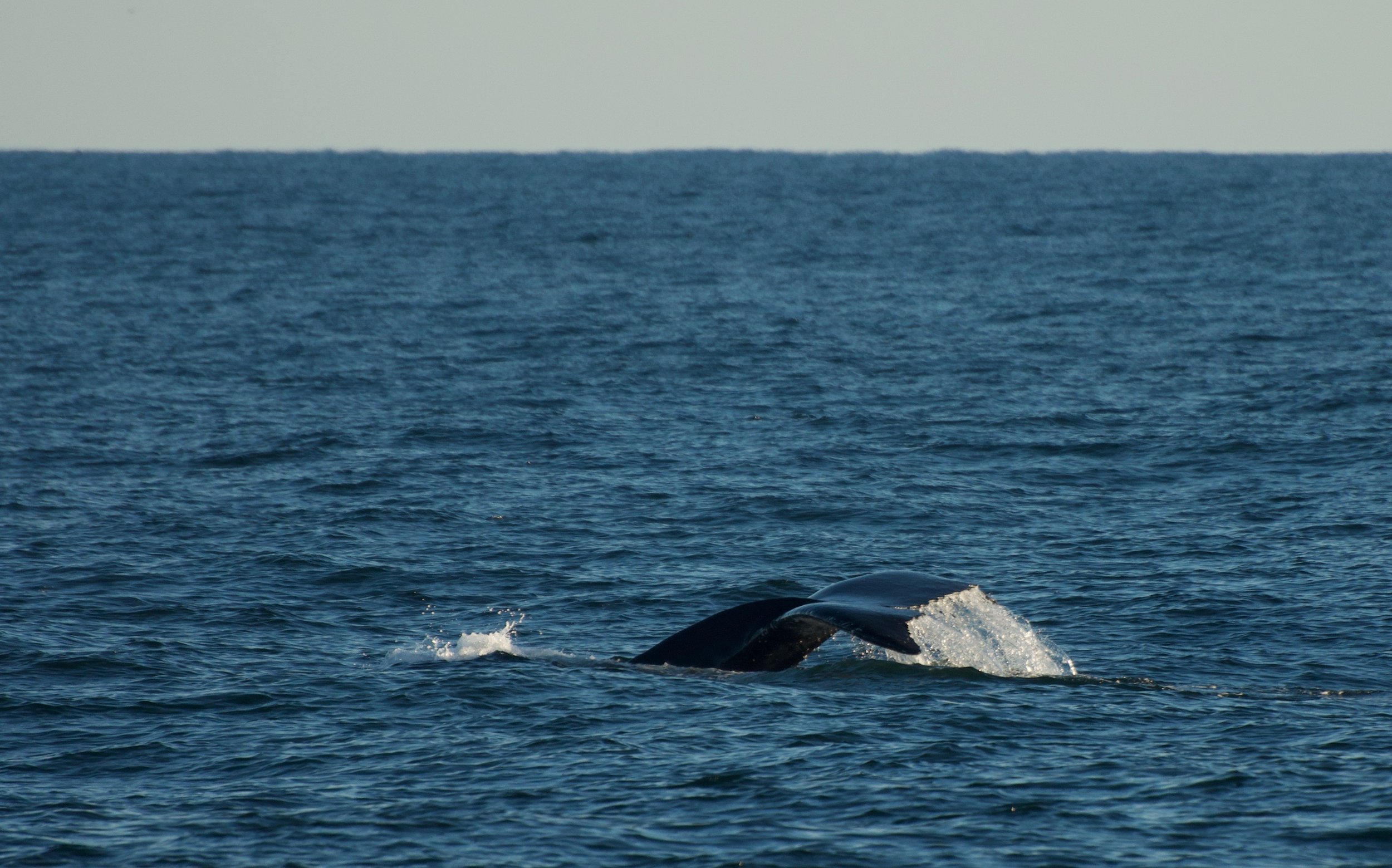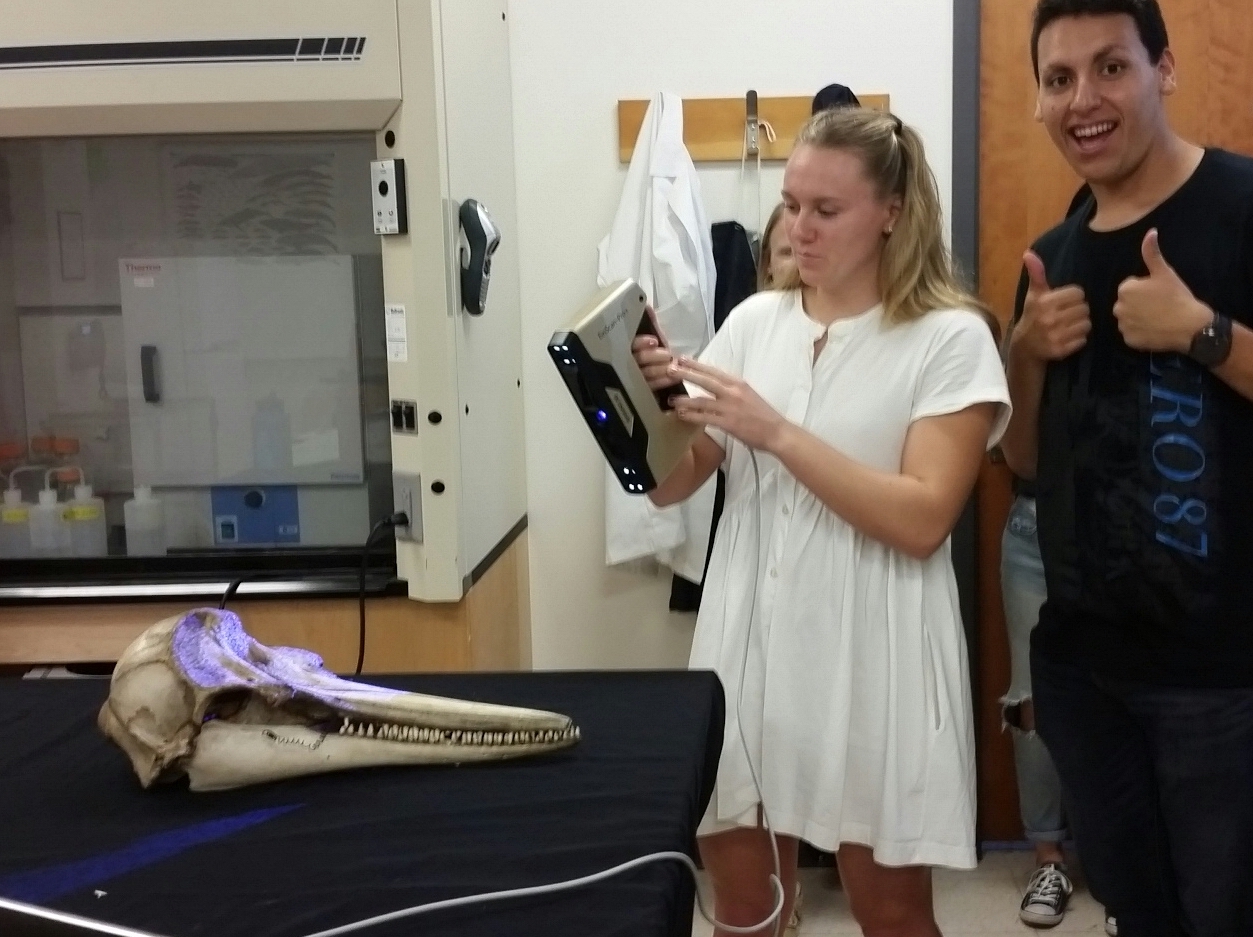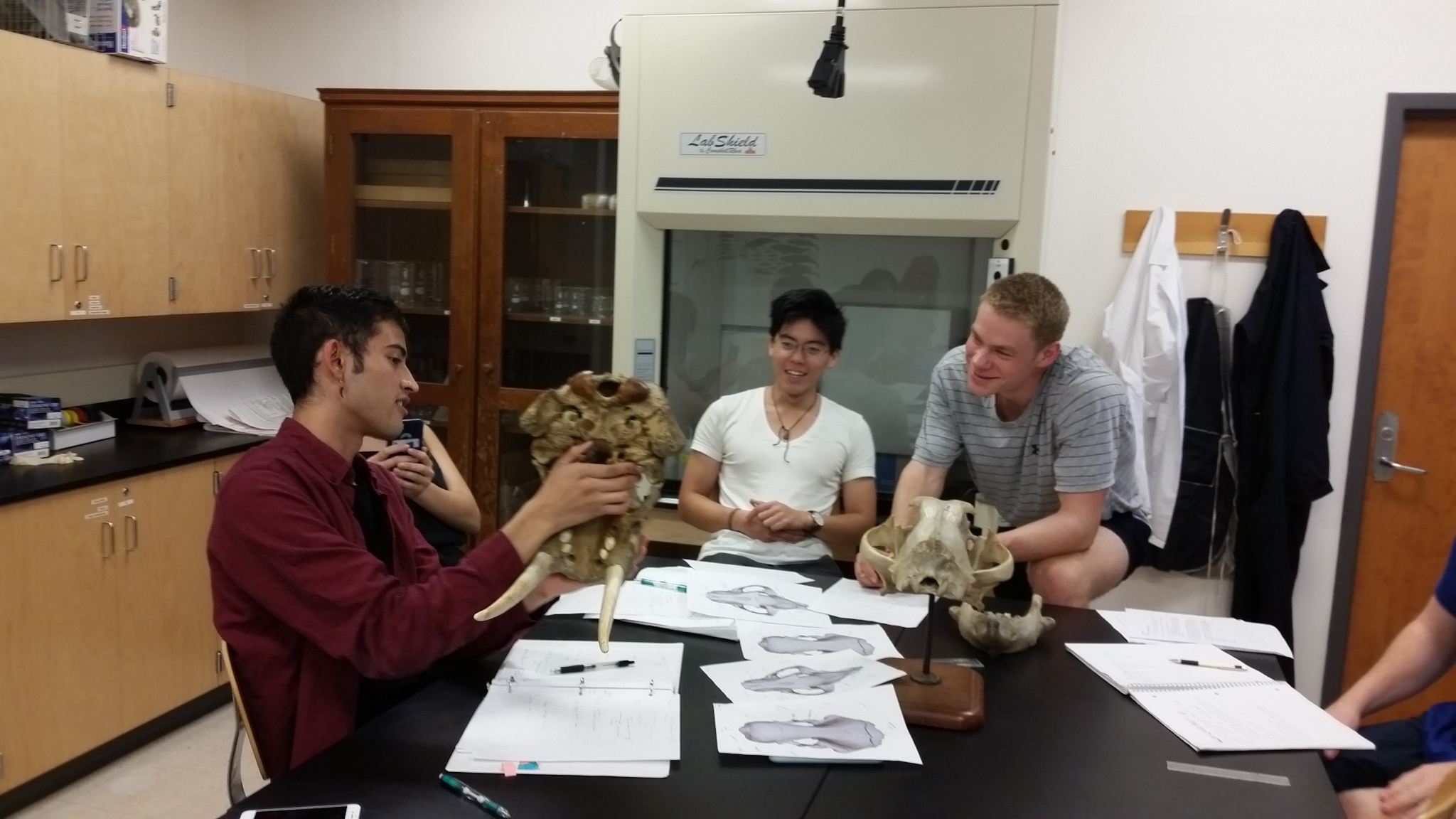Teaching
My goals as a professor: Fuel the flames of curiosity within a constructive, inclusive, and dynamic learning environment,Build competencies in critical thinking, problem solving, communications, and metacognitive skills while fostering a growth-oriented mindset, andPromote lifelong learning
I aim to accomplished these goals through inclusive and innovative teaching techniques that include peer instruction, active learning, group problem-solving, outdoor immersive learning, and one-on-one research mentoring.“Matt’s enthusiasm and passion are infectious, and he brings a lot of joy to the process of learning this material. His dedication to answering our questions is really striking to me, and it demonstrates how much he cares about our experience in the class.” - Student Eval - Swarthmore Conservation Biology
Swarthmore College students at the Smithsonian’s National Museum of Natural History
Gaining a sense of scale next to the skull of a blue whale!
“Matt has an unparalleled ability to explain complex concepts in an interesting and memorable way, so that students can both understand and remember these concepts. He has an enthusiastic but still professional manner that makes section both informative and enjoyable!” - Student Eval - SIO Marine Mammalogy
“He was incredible and taught a few of our lectures and it made me wish that he was a professor here. He was so enthusiastic and really helped us all engage in the material. His excitement was encouraging and made me want to listen and learn more.” - Student Eval - UCSD Earth History & Evolution.
Courses I’ve taught:
Conserving Biological Diversity (SP22)
Ursinus College
In the US, marine mammals are protected by a set of strong environmental laws and cultural values. Students in this course learned about marine mammal biology, but most of the course focused on solving problems related to marine mammal conservation using the toolset of a modern conservation biologist. Students became familiar with the mechanisms of the Endangered Species Act, The Marine Mammal Protection Act, and international agreements (such as CITES etc.). They used their knowledge to develop case studies for moving conservation forward in challenging situcations.This workshop-style course was designed to support underrepresented minorities and first generation low-income students through the rigorous introductory biology material. We did this through peer teaching and community building. In addition to offering an environment for additional practice with course material, the course was designed to create engaging online team-building and a unique self-led nature journaling experience to connect course material with real organisms. This course was taught entirely online due to COVID19 restrictions.Introductory Biology (SP20 & SP21)
Swarthmore College
Evolution (FA19)
Swarthmore college
This course is designed to introduce students to the field of evolutionary biology by doing evolutionary research. We focus on how the genetic structure of a population changes in response to mutation, natural selection, gene flow, and genetic drift. Our work provides a mechanistic understanding on how these aspects of evolution are studied in the modern era, and perspectives on what our observations of the natural world tell us about how the diversity of life evolved on Earth. We also briefly discuss the history of evolutionary thought, the human social discussion around Darwinian evolution, Evolution of social systems in animals, and we trace the evolutionary history of our own species. Other topics, such as evolutionary rates, speciation, phylogenetics, and extinction, provide a broad view of evolutionary processes. Lab Modules include building phylogenies and mapping traits in R, measuring natural selection in the local Crum Woods, and NSF-style Grant writing.This course provided an overview of the foundational concepts and future horizons of biodiversity conservation. Students developed: (i) an understanding of the scope and drivers of the current extinction crisis, (ii) familiarity with the current pantheon of conservation 'solutions', (iii) a philosophical basis for which to approach problem-solving in conservation, and (iv) a deeper connection with, and appreciation of, the natural world around them. Much of this course was informed by my own experience contributing to international biodiversity agreements with the USGS (including through the Convention on Biological Diversity and the Intergovernmental Science Policy Platform on Biodiversity and Ecosystem Services.Marine Mammal Conservation and Policy (FA21)
ursinus college
Scholar’s Program (SP21)
Swarthmore College
Example of an excerpt from a student’s nature journal.
I worked as part of a four professor team to design content based on the NSF/AAAS “Visions and Change in Undergraduate Biology Education” framework. I designed one quarter of the lectures, plus accompanying active learning activities and assessments (quizzes and exams). The topics I delivered included quantification of biodiversity and human dimensions. This is the largest course offered at Swarthmore (120 students) both of these semesters were taught online due to COVID19 restrictions.Swarthmore Students In Evolution measuring traits of native jewel weed in the Crum woods for a laboratory module measuring traits under selection
Swarthmore conservation biology student learn field and analytical skills (such as camera trapping) and observe and connect with local natural spaces.
Conservation Biology
(SP19 & FA20)
Swarthmore College
This course provides an overview of the foundational concepts and future horizons of biodiversity conservation. To tackle the challenge of the current human-driven extinction crises, we integrate real-world case studies and primary literature with adventures outside, and exposure to the minimum quantitative toolkit of conservation biologists. In keeping with the 'real-world' ethos of the course, student develop a case study on a specific conservation solution as a final course project, and peer-teach it to the remainder of the class. Through this course students develop: (i) an understanding of the scope and drivers of the current extinction crisis, (ii) familiarity with the current breadth of conservation 'solutions', and (iii) competency in a suite of tools necessary to be an effective conservation biologist.Marine Mammal Biology and Conservation (FA18 & SP20)
Swarthmore College
In addition to the classroom course I taught at UCSD-Scripps Institution of Oceanography, I developed an all new lab component to compliment this course. Activities including modules on comparative anatomy of mammals and R statistics for mark-recapture population abundance estimation and population genetic structure analyses (important tools for a modern marine mammal conservation biologists), as well as field trips to the Smithsonian (above) and to sea to see whale bones and whales in the flesh (below)!! Swarthmore students and I worked together to learn 3D scanning and printing using the teaching collection. In doing so, we learned cranial anatomy, phylogenetics, and valuable skills for modern comparative biology.
We also went to sea to experience the challenges and excitement of studying marine mammals in their environment.
We were also welcomed to the Smithsonian’s National Museum of Natural History to tour their marine mammal collection - the largest natural history collection of these animals in the world!
Marine Mammalogy (SU16)
UC-San Diego & Scripps Institution of Oceanography
I designed and implemented all aspects of this class including the basic structure of the course, assignments, grades, course website, etc. Gave traditional lectures and student-guided discussion periods, I also lead field trips to the San Diego Natural History Museum (left), the NOAA Southwest Fisheries Science Center (below) to reinforce material and spark curiosity. 
